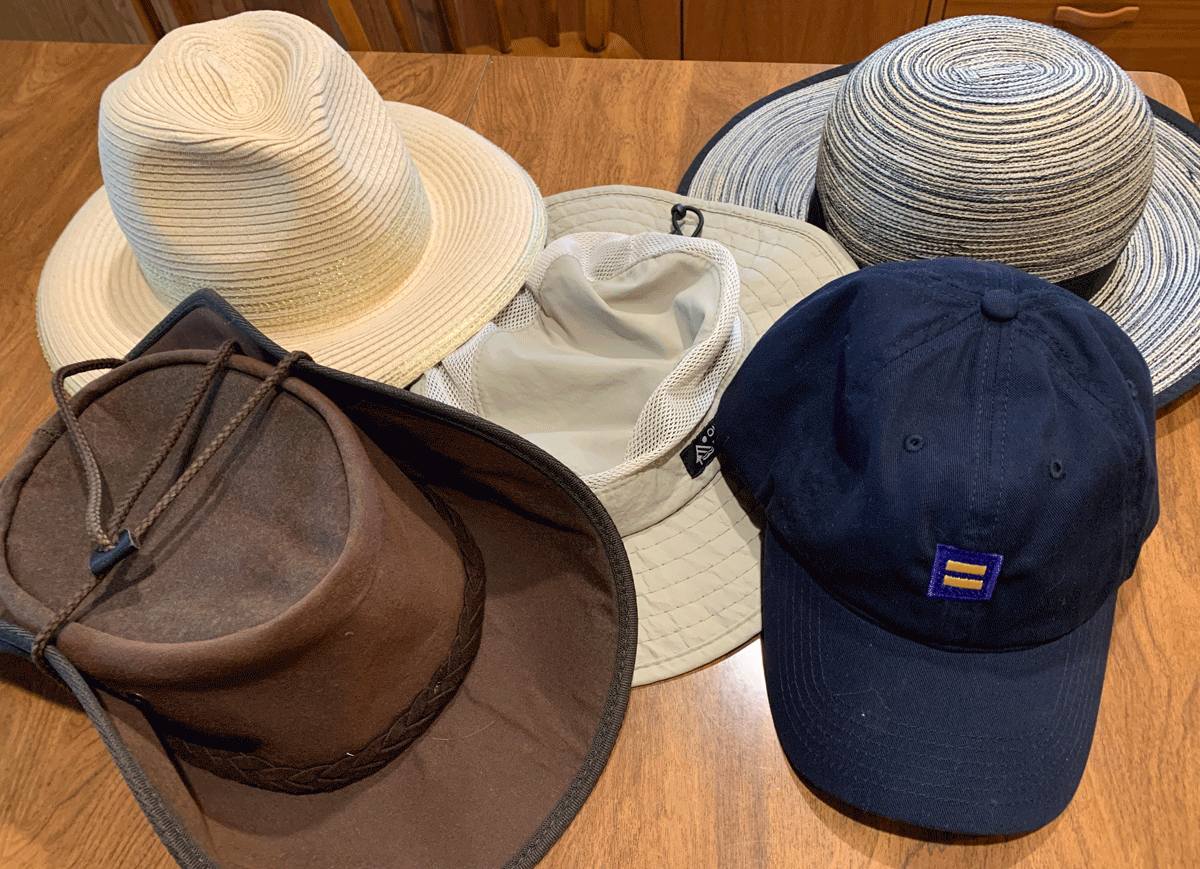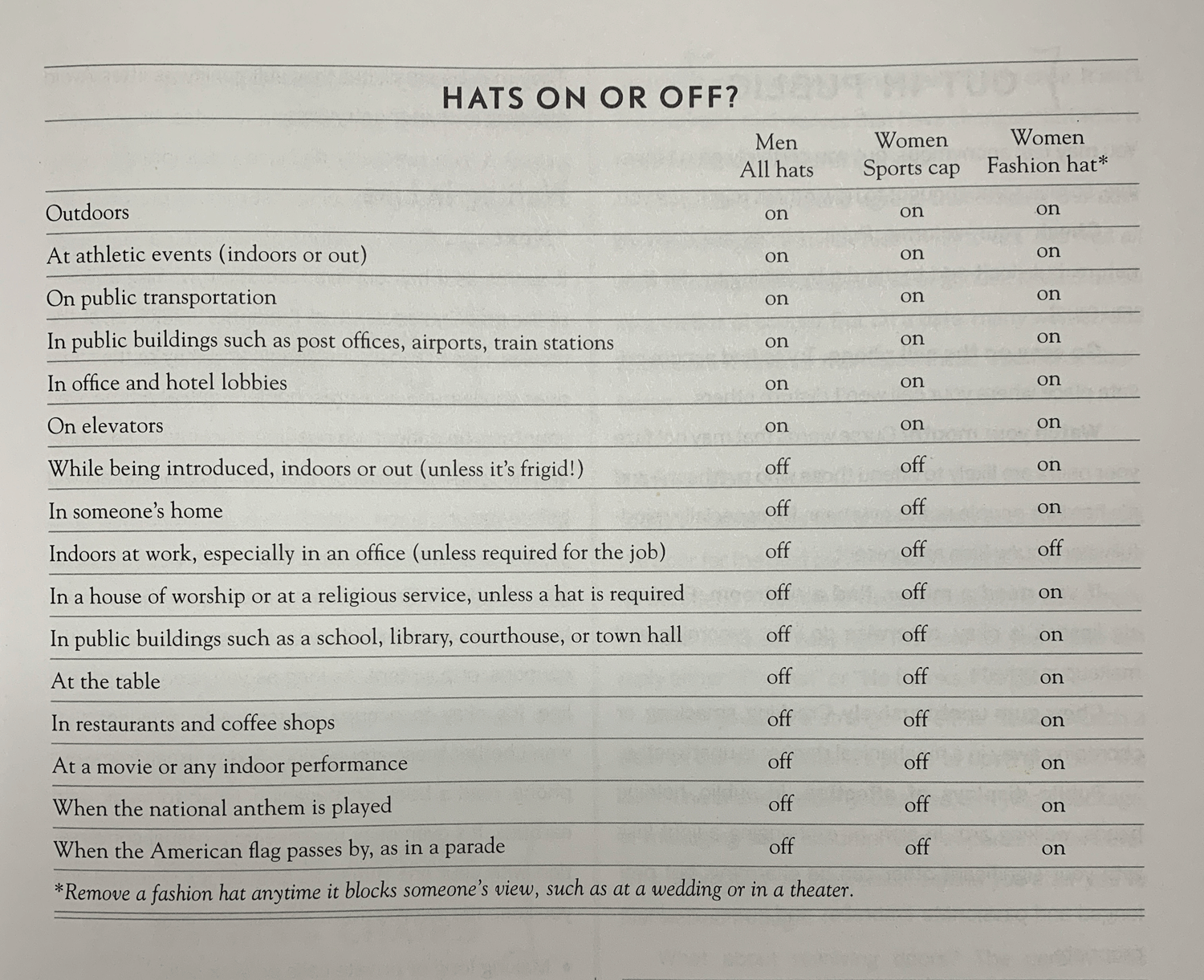Troublesome Hats
Tourist hat in Mexico
Troublesome Hats
How can a hat be a source of trouble? While we all need a way to keep our heads and ears warm and to stay dry in the rain, one hat or scarf will never do. We also need a hat to protect us from sun, to promote our favorite sports team or politician, and perhaps one to advertise an exotic location we’ve traveled to. For special occasions or events, we’d really like to have a cowboy hat, a gaucho hat, perhaps a beret or sombrero, and maybe even a jaunty fedora. This expanding collection now needs a storage system. At first, they fit on the closet shelf, but soon we find they are in stacks that fall over or their size or shape requires a box or perhaps clips attached to the wall making it easy to see them all. Are hats taking over your home? Marie Kondo would not approve. Now you need to decide which ones you really love and create a plan for discarding the excess. Be very careful the next time you spot a hat booth at a craft or arts fair. You might just fall in love with a new creation.
Hats for hiking, sunning, traveling and advocating for equality.
The proliferation of hats is not the only problem. Articles and even books have been written about hat etiquette, but you probably have not seen them. Most Americans stopped reading Emily Post decades ago and chances are your parents never got around to explaining hat etiquette. You might think that doesn’t matter, since you do not plan to visit the Queen of England or the Pope, but what if you get invited to a prestigious social event or have a business opportunity with people who pay attention to etiquette. Wearing the wrong hat or taking it off or putting it on at the wrong time or in the wrong manner could mean lost friends or a lost business opportunity. Even ordinary people, with little interest in status, can be in trouble on account of their headgear. Those rarely explained rules can be difficult to understand and follow. Men are supposed to remove their hats indoors, except in certain public places and not if the hat is a yarmulke and you are attending a Jewish service. Women, on the other hand, are expected to wear their hats (other than sports hats) indoors and out and may be required to cover their heads in religious services. Some religious services, such as in a mosque, will require that women wear scarves or other coverings for their hair. If you find yourself with a court date of any kind, traffic, small claims or as a witness at a trial, plan your attire carefully. In courtrooms, inappropriate dress is considered disrespectful and can result in removal, commands from the judge or bailiff to remove an offending hat, or to cover up an offending shirt. For men, a tie might be required. A clueless defendant might not realize, until it is too late, that the judge has been offended by a breach of the unstated dress code and may act more harshly than would otherwise have been the case, due to a person’s disrespectful dress.
Husband’s hats for sports, travel and around town.
There was once a time when hats helped us know what job a person held. We could spot a police officer, a fire fighter, a park ranger, a bus driver, a letter carrier, a chef, a nurse or a soldier by what was on their head. At a costume party or on Halloween, that may still work, but these days not everyone wears the traditional hats of their profession and there are lots of imitators, such as private security employees who may dress as if they are police officers. Life might be simpler if everyone wore a costume that clearly designated their profession, but American informality and the desire for personal freedom don’t support that. Informal, casual attire can be confusing for the general public, but it can also be a problem for the person who has a job to do. Having the right clothing, including headgear, can generate respect from others and also be a reminder to the professional to be on their best behavior, consistent with the position of trust they are expected to fill.
How did I get fixated on hats? As a new judge back in the 80’s, my bailiff got upset with me for not calling out the men in the courtroom who were wearing baseball caps. I was so accustomed to my dad wearing them, that those hats did not look out of place to me. My deficient upbringing was exposed! When my bailiff carefully explained to me how the caps were a sign of disrespect, I still didn’t get it. How could I insist that men remove their hats, but allow women and those with religious headgear to wear theirs? How could I tell if a person had a medical reason for covering their head? I had enough on my mind in the courtroom without having to figure out and enforce hat etiquette. I began asking other judges how they handled hats in the courtroom. Most judges did believe it was an issue worth their attention, but their approaches varied a lot. Since my experience with the issue was decades ago, I can’t say what the current practice is, but the Washington State Administrative Office of the Courts has helpful advice on its website. It advises potential jurors: “Dress comfortably. Suits, ties and other, more formal wear are not necessary. But don't get too informal -- beach wear, shorts, halter or tank tops are not appropriate in court. Hats may not be allowed unless worn for religious or medical purposes.”
American lawyers sometimes chuckle when they see the outfits attorneys were expected to wear in court in Canada and England. The practice may have changed, but white wigs and black robes were once required for both attorneys and judges, along with special collars and cuffs. As explained to me, these costumes were equalizers, helping to eliminate bias and judgement based on choice of dress. With the American revolt from all things British, have we taken things too far? Should we reinstate the study of etiquette, publish dress codes for all to see, and encourage uniforms for school children and professionals? While I don’t think we should return to the days of judges and attorneys wearing wigs, Justice Ruth Bader Ginsberg might have been on to something regarding her choice of collars for her black robe. Attire sends a message. We should try to ensure it’s a message that serves a positive purpose. The Revised Code of Washington (RCW 2.04.110) still requires judges of the Supreme Court, the Court of Appeals and the Superior Court to wear black silk judicial gowns. I suspect many of those robes are now made of other fabrics, but the black color is still the standard here.
Hats and dress codes are troublesome, along with American informality, changing roles in society, and the decline of Emily Post and Ms. Manners. It can be hard to adjust to the modern world. I’m retired and glad I am no longer expected to act as the hat police.
A favorite hat for walks around town.
Note: In case you’d like to review the hat rules as of 2011, according to Emily Post’s Etiquette, 18th Edition, Manners for a New World (724 pages), you can find the following chart on Page 21. Please note that all men’s hats are to be removed in courthouses, as well as sports caps worn by women. Emily Post also acknowledges that cancer patients do not need to comply with these rules. In addition, the book cautions the reader to check with a person of that faith for the appropriate attire in a place of worship.
Emily Post’s hat chart - Page 21 of Manners for a New World, 18th Edition.





